One of the single most common complaints voiced about watches – from what for lack of a less unwieldy term, we'll call the enthusiast base – is "it's too big." What is or is not too big, of course, varies from one person to the next. That much is obvious, but it does make evaluating whether or not a watch is really too big or too small, or just right, a little difficult to figure out unless you actually get a chance to try one on. There are really two questions when it comes to figuring out if a watch is too big. The first, of course, is, "is it so large that the majority of its intended audience are going to find it uncomfortable to wear?" The second question is, "is it so large that the size detracts from the kind of watch it's supposed to be?"
Both are highly subjective judgements of course, and if you're, say, six foot five and an NFL pro, a 45.5 mm x 17.8 mm watch is going to fit you in a way that it is not going to fit your average desk-bound Walter Mitty. How that mass is distributed is extremely important as well. A watch with a lot of mass and a high center of gravity, that has long, protruding lugs, is probably going to sit too high on the wrist no matter who you are, and will tend to both slide around, and pull your arm off center, in a most disconcerting fashion.
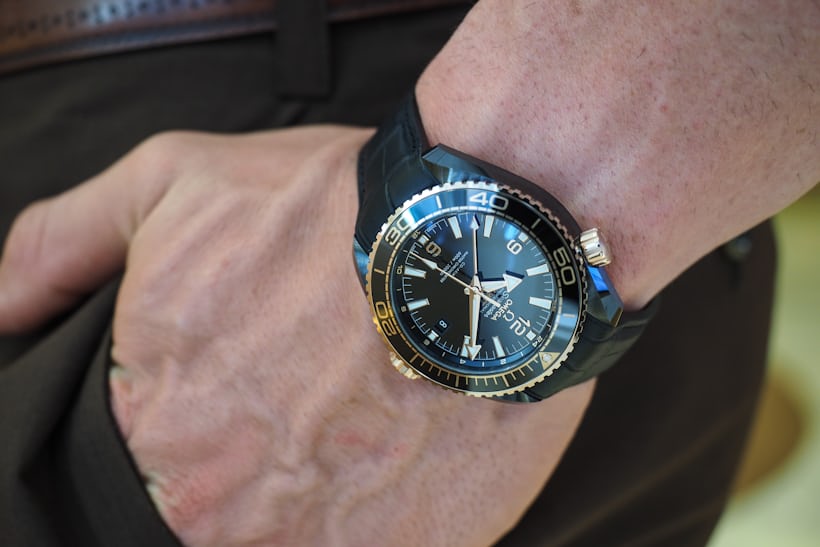
What isn't highly subjective, however, is actual mass. The real inspiration for this article was a suggestion from a reader that we put a little more actionable data into our watch reviews by putting watches on a scale and publishing how much they weigh. It was a great idea and we're going to be incorporating that info moving forward. Of course, the weight of a watch isn't much help without some basis for comparison and to make a start, we went around the office, grabbed watches off our colleagues, and put them on the scale. Please note that ideally, we'd have a database of watch heads alone, as well as watches on OEM straps and OEM bracelets but for now, we're just noting whether the watch was weighed on a strap or bracelet (obviously a metal bracelet will add considerably to the overall weight, but may actually not make all that much difference to the subjective experience of relative comfort or discomfort, due to the mass distribution).
Just to have a relatively ubiquitous real world object for your reference, the iPhone 6S weighs 142 grams. All watches (and the phone) weighed on a Dymo M25-US.
Seiko Diver Automatic SKX-007 (OEM Bracelet): 142 grams
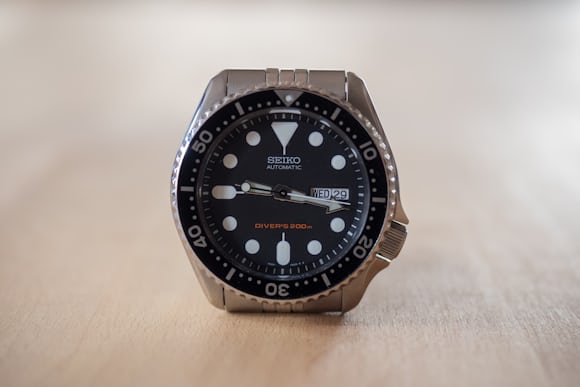
No surprises here. This is a chunky monkey and no two ways about it; the SKX-007 is built for strength, not speed. This was actually the heaviest watch we weighed in the office, although one of our colleagues who works remotely from somewhere in the American heartland reports that his Seiko SRP775 "Turtle" diver is a whopping 180.5 grams on a bracelet. I've always found SKX-007 pretty wearable despite its mass, however; maybe the relative flexibility of the OEM bracelet has something to do with it.
Rolex GMT Master, Aluminum Insert (OEM Bracelet): 122 Grams
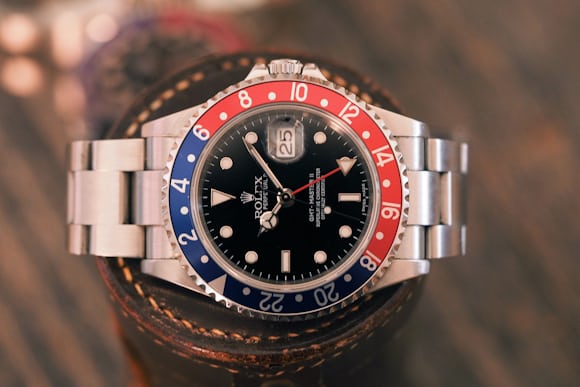
Slightly less heavy than the Seiko Diver. Interestingly, although it's only a 20 gram difference the GMT Master seems much lighter on the wrist than you'd think from such a relatively small reduction in mass. This may be due to the fact that with the Rolex the mass is more evenly distributed, thanks to the difference in bracelet construction. A colleague with an older vintage model found a further reduction in mass – down to 102 grams, again, thanks to the difference in bracelet construction.
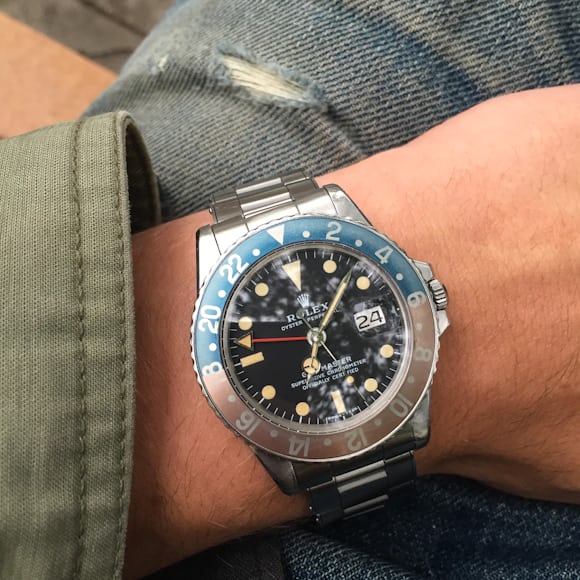
Rolex Daytona, Ceramic Bezel (OEM Bracelet): 132 Grams
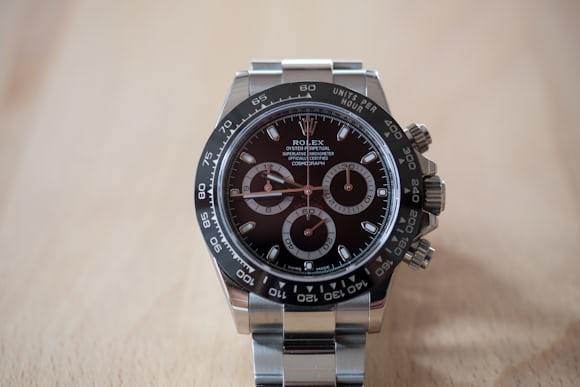
Still pretty close to iPhone 6 territory. The new Daytona was definitely one of the heavier watches we weighed though again, as Rolexes seem to, it gives much less of a subjective impression of mass on the wrist than you'd think; the owner finds it more comfortable than some of the owner's other, lighter watches on a strap and again, the consensus is because the mass distribution is more even. In this case, when it comes to wearability mass distribution seems to be at least as important, if not more important, than actual mass.
Royal Oak "Extra Thin" Caliber 2121 (OEM Bracelet): 112 Grams; Vintage Royal Oak 5402: 94 Grams
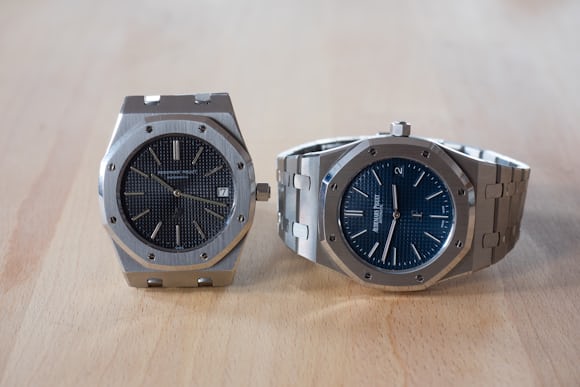
Two very flat watches, even on metal bracelets, are nearly a third lighter than our SKX-007 (and the iPhone 6, of course). Both very comfortable to wear; the integration of the bracelet with case doing a lot to make them even more comfortable. Not quite sure in this instance where the 8 gram difference in weight comes from because at a casual glance, these are very difficult to tell apart unless you know what to look for. The skeletonized winding weight in the new guy, maybe?
Omega Speedmaster Professional (Third Party Strap): 70 Grams
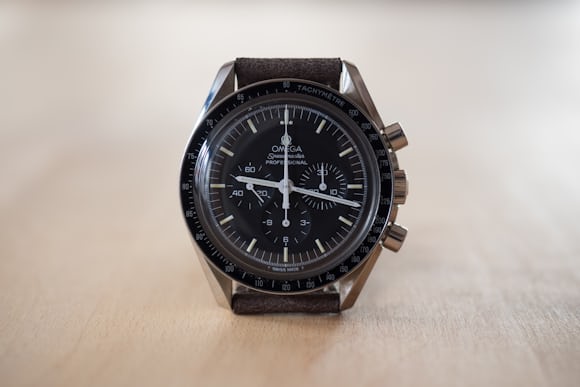
Very comfortable, wearable classic. We also weighed a Speedmaster worn by a friend who dropped by the office and had his on an OEM Speedmaster bracelet, with four links removed for sizing and of course that was a lot more substantial at 136 grams. Just goes to show you what a really major difference in wearing experience you can get when you change out a bracelet for a strap – it's less weight, of course, but again the difference in mass distribution can be at least as important as well (if not more).
NOMOS Glashütte Ahoi (3rd Party Strap): 74 Grams
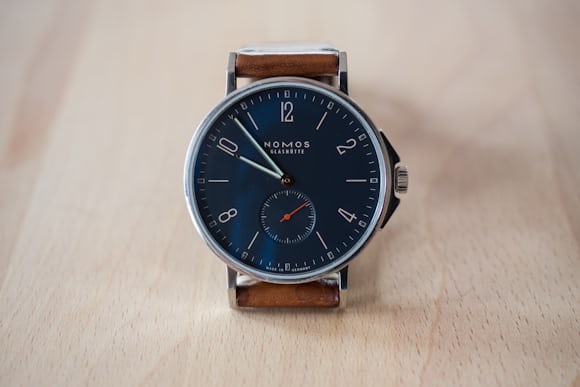
Another somewhat counterintuitive result. If anyone had asked me to hazard a guess, I'd have said the Speedmaster Professional, at 42 mm x 14 mm, had to be at least 25% heavier than the NOMOS, at 40 mm x 10 mm but there's only a four gram difference, at least when both watch heads are on fairly similar straps.
Tudor Ranger (3rd Party Strap): 80 Grams

Rather surprisingly, the Ranger, Speedmaster, and Ahoi are all roughly in the same ballpark; on a leather strap they all fall within a 10 gram range. They all produce very different subjective impressions on the wrist as well.
Tudor Black Bay Bronze (OEM Leather Strap): 114 Grams
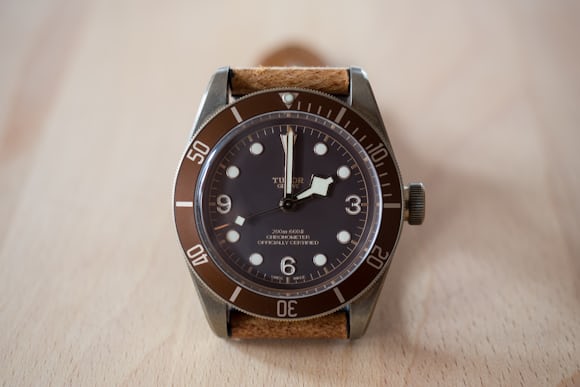
Unsurprisingly, a pretty substantial watch. The funny thing here is that there is a two gram difference, on our trusty Dymo scale, between this and a Royal Oak Jumbo on a bracelet and yet you couldn't imagine two more different wearing experiences. You immediately get an impression of mass and solidity from the BBB that you absolutely do not get from the Jumbo (in either the vintage or modern iterations) and I'd bet a hundred thousand 20 mm spring bars that most watch enthusiasts, if asked, would have said that a bronze cased, 43 mm watch has gotta be significantly heavier than one of the thinnest and most elegant steel watches ever made, bracelet or no – but clearly, that's not the case.
The Apple Watch (Steel On Silicon): 76 Grams
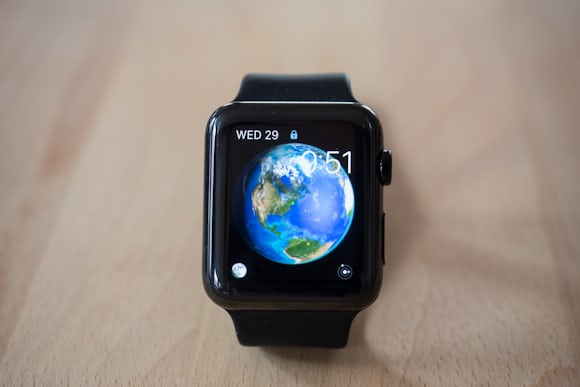
Or about the same as a Speedmaster on a strap, which means if you want to know what an Apple Watch feels like on the wrist without actually putting one on, just strap on your Speedy and shut your eyes.
Vintage Chopard Ultra Thin: 42 Grams
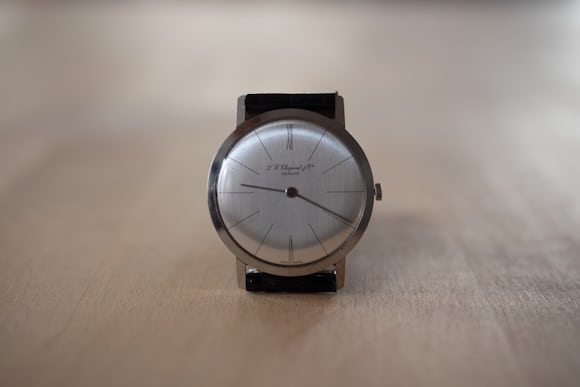
Of course not everyone in the office wears classic, durable sports watches (although obviously on a Wednesday at HODINKEE, which is when we did the rounds, they were well represented). Ultra-thin/flat/fine watches are something of a passion for several of the folks in the office and here's one from Chopard – a lovely little thing in white gold – that weighs a grand total of 42 grams, or less than a third the weight of our substantial, 200m water resistant friend from Seiko. It's 10 grams lighter than a Tough Solar G-Shock that lives in a window sill here at the office, by the way – 52 grams for that one.
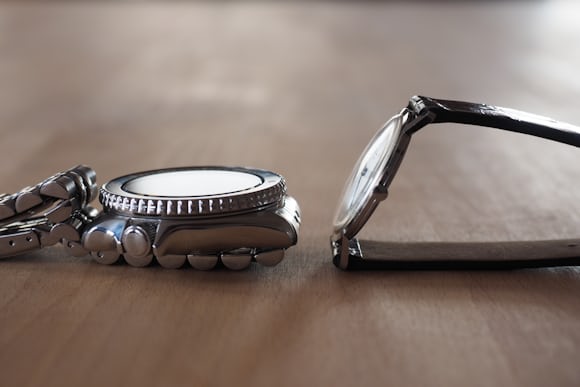
And The Lightest Is – A Vintage Center Seconds Lip: 32 Grams

Another lovely, smaller watch (34 mm) on a strap, with very attractive Deco-style numerals. About the same size as the Chopard but the lower density of steel vs. gold makes this the lightest watch anyone wore to the office by a considerable margin.
What were the takeaways for us? Aside from the diversity of tastes represented, probably the biggest two were these: in terms of overall mass/weight, a bracelet vs. a strap makes a very big difference, and secondly, total mass is nearly overshadowed in importance by actual weight distribution. The subjective sense of whether a watch is too big or too heavy is a factor of objective numbers, sure, including diameter, thickness, and how much it weighs. But the overall subjective impression is a highly complicated interaction between the style of a watch, objective factors, and the wearer's physical dimensions that's so highly idiosyncratic and individual that saying any watch is objectively "too big" is something we should all claim with maybe just a little more caution.
No comments:
Post a Comment